I was out rowing not long ago on a beautiful Vermont morning. There was no one but myself, a pair of loons, and a blue heron on the 900-acre pond, and the water so clear I could see small bass swimming in the weeds at the bottom. Above an unbroken shoreline of pines there was only blue sky and puffy white clouds. These are wonderful and fun times, and my Solo Packboat is what makes these moments possible.Each 12′ Ultra-Light Solo Packboat is hand-crafted one at a time by the Martin brothers, Justin and Ian, of the Adirondack Guideboat Company (AGB) in North Ferrisburg, Vermont. It’s their latest innovation, inspired by the original cedar guideboats that have plied the lakes, rivers, and streams of New York State’s Adirondack Mountains since the middle of the 19th century, carrying sportsmen and their gear to places without roads. The boats needed to be tough for river bottoms, agile for streams, capable in whitecaps on windy lakes, large enough to carry plenty of cargo, and yet light enough to be portaged solo when needed. Although the Martins still build some boats from cedar, the majority are laid up with strong and light Kevlar hulls, with cherry gunwales and decks, and woven seats and backrests. The flat bottom is wide enough to keep the Packboat upright on a beach.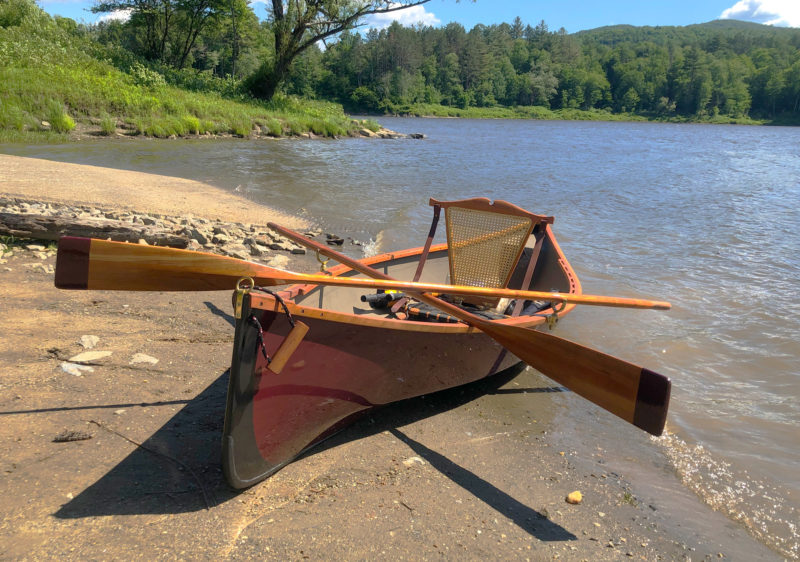 Photographs courtesy of the author
Photographs courtesy of the author
Join The Conversation
We welcome your comments about this article. If you’d like to include a photo or a video with your comment, please email the file or link.
Comments (7)
Leave a Reply
Stay On Course

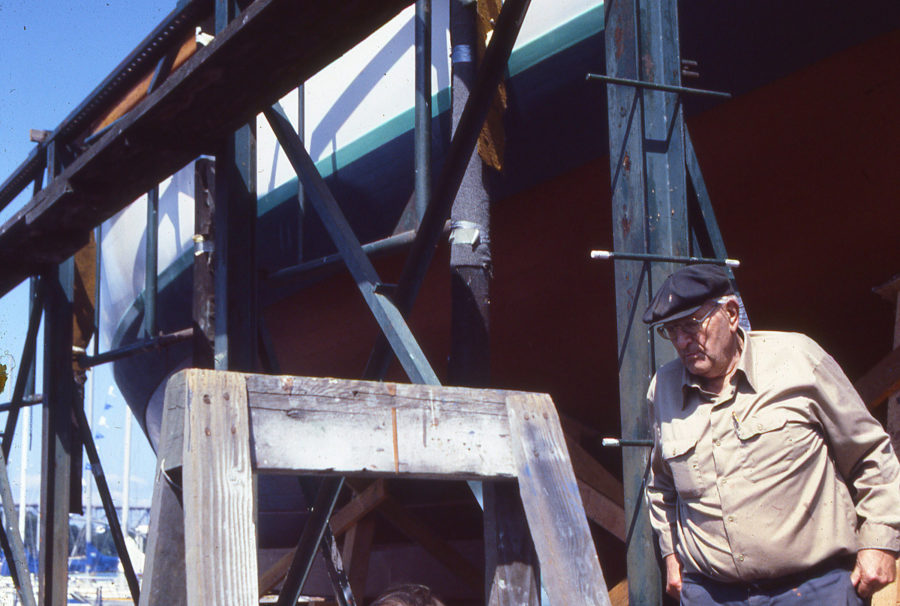
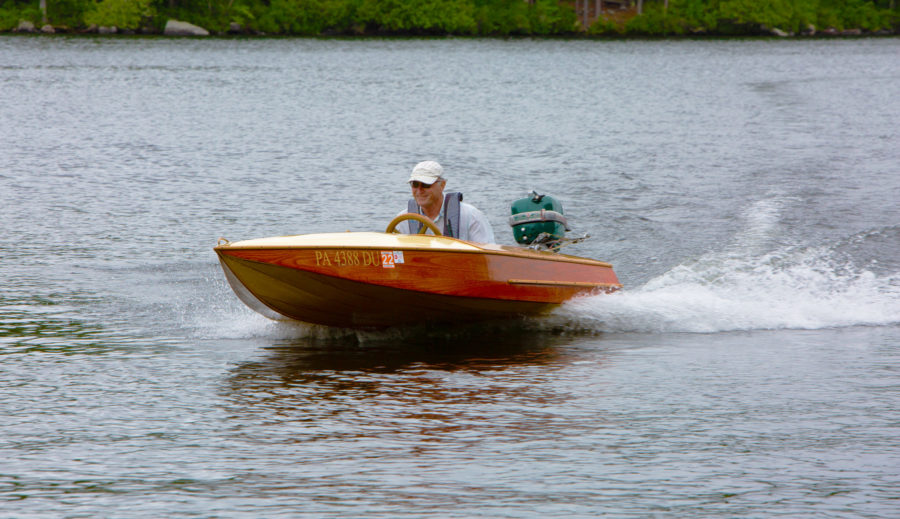
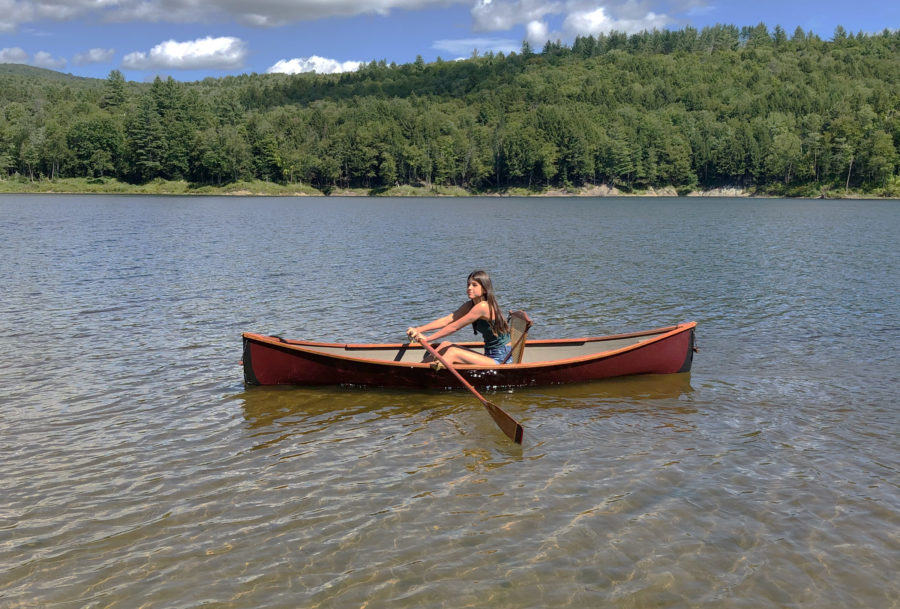
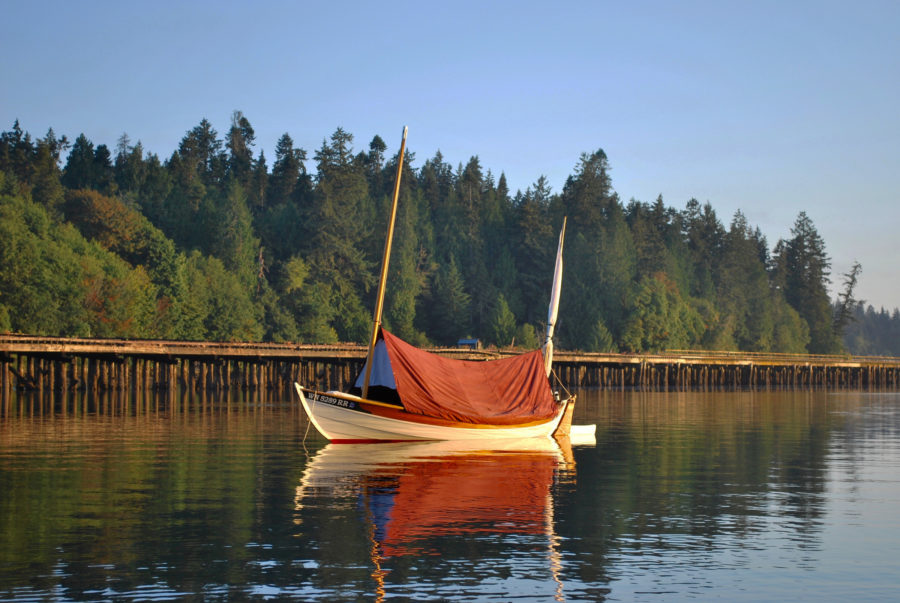
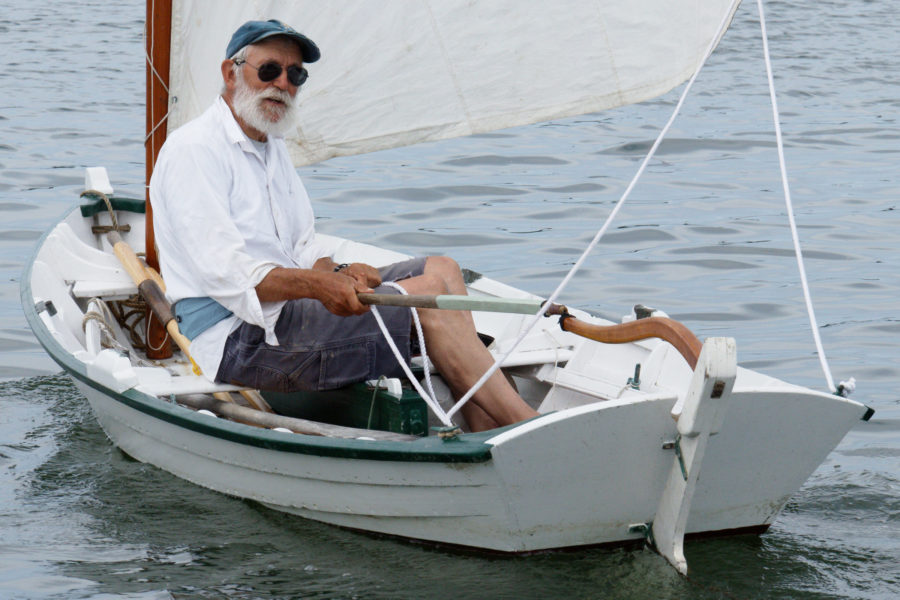
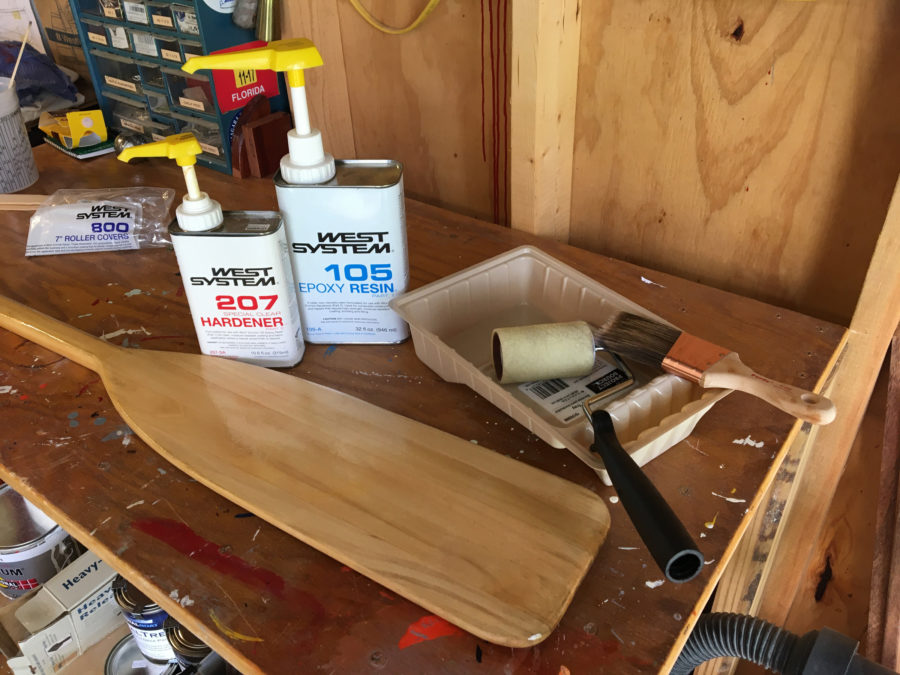
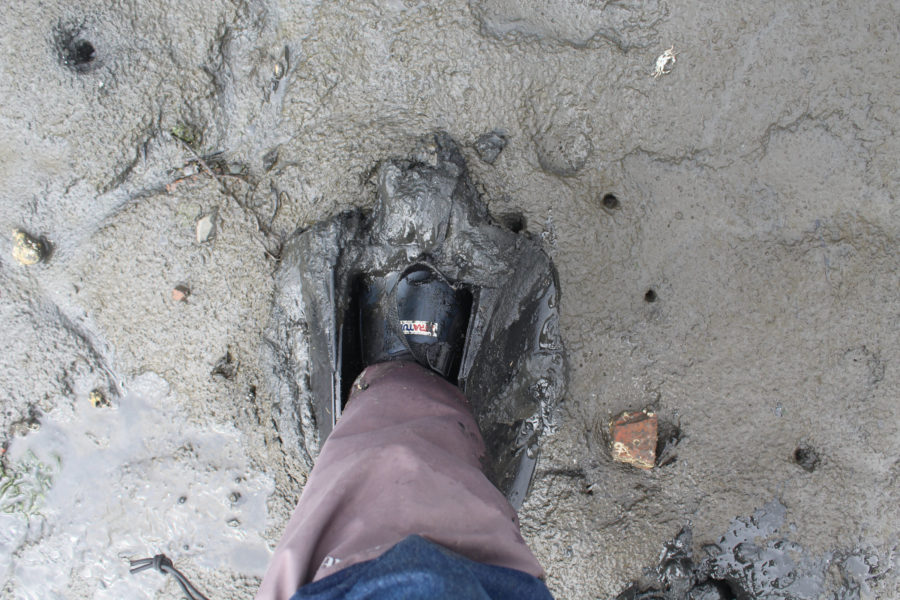
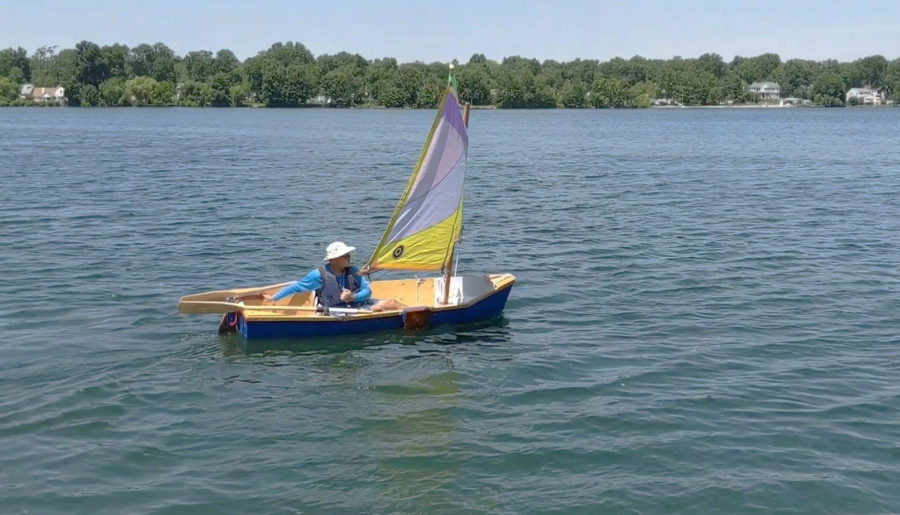
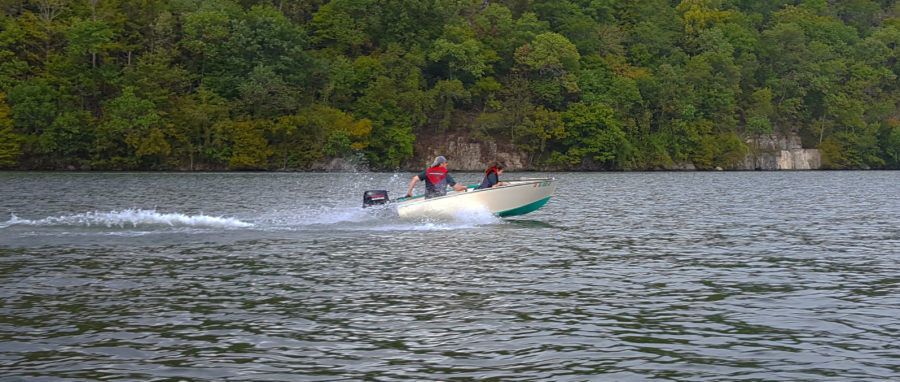
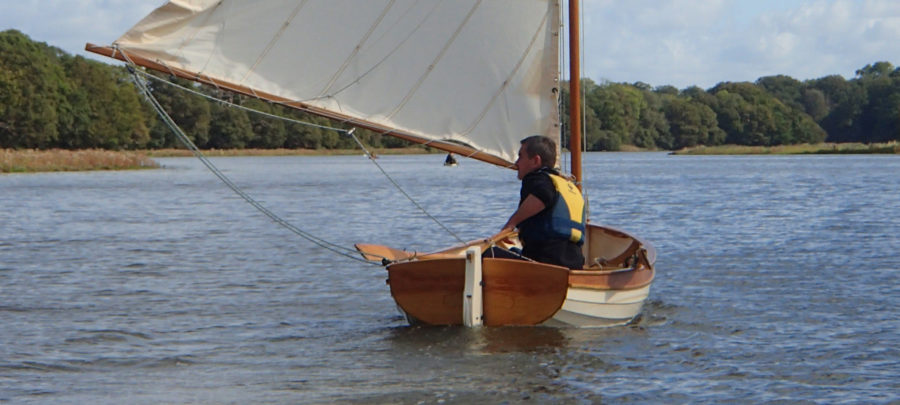
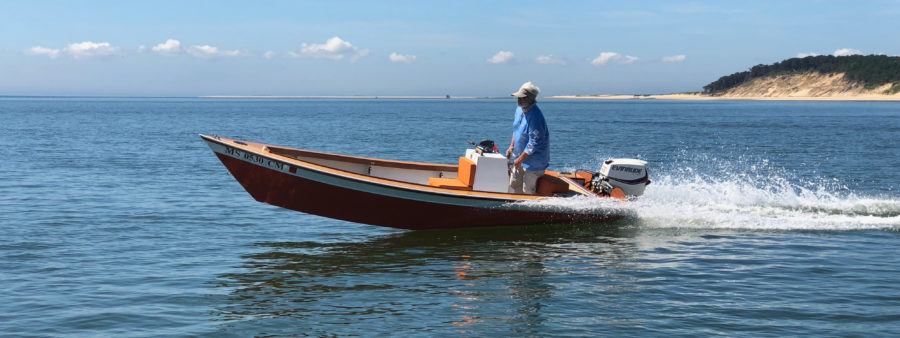
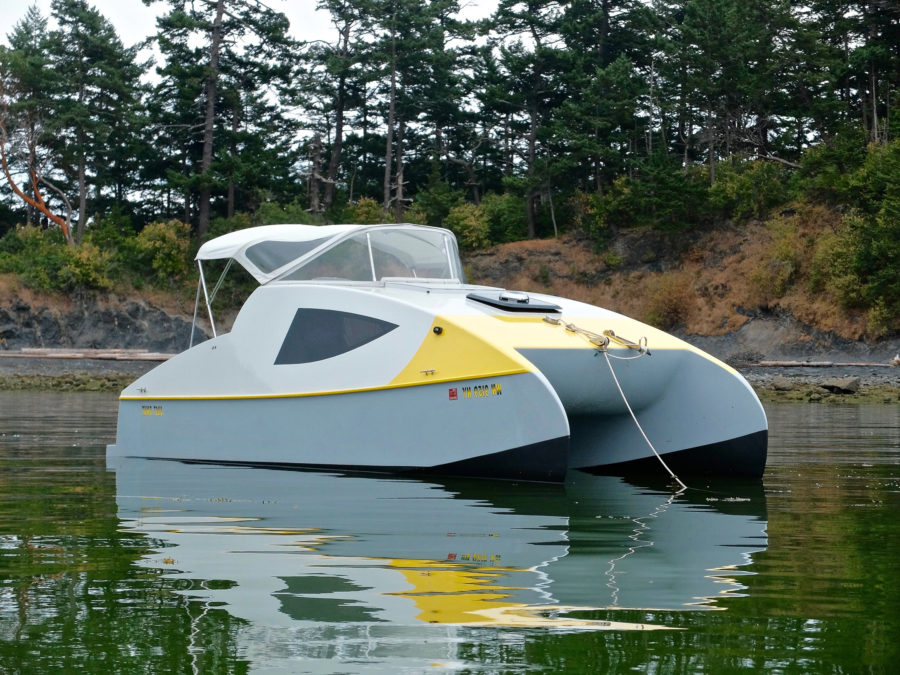
Mike, I enjoyed your comments on the Vermont Pack Boat. I have been rowing mine on Texas waters since 2009 when the Martins made a wide-ranging delivery run across country and stopped in Houston. They had two boats, a Dory and a Packboat. At age 73, I chose the Pack Boat because of light weight, easy on-off handling, and realizing that flat water was where I would mostly row.
I have been delighted with the sliding seat for exercise and woven cane seats and backs when I want to show it off. By far, the most boat for the money in every way.
I’ve rowed my gunning dory off the beach in Lake Michigan, alongside a friend who has a Vermont Pack Boat. He couldn’t help repeating an idea from Phil Bolger, that the city should reimburse us for adding to the scenic beauty of the lakefront. It’s a pretty gorgeous boat, and seemed to move effortlessly. It’s on my list of: I don’t really need another boat, but I’d sure like to own one of those!
I row a similar boat, a wooden kit canoe made by a competitor, same length and similar weight. The pull-up rope is brilliant. Going to try it. I’ve always kayak-paddled mine, switching to a short canoe paddle now and then, but haven’t thought to row it; am going to try that, seeing that it seems to work well in your AGB 12. I like how such boats quickly glide along at 3 mph without much effort, and with a little extra umph thrown in, are up near 4.
I’m going to try that pull-up rope to get my old body in and out of my canoe and kayak. Great idea…
Wonderful article by a writer in love with his boat…..a pleasure to read for me, landlocked in St Louis, MO. This would be a great boat for me, an 81-year-old published nature writer, if I had the water necessary for this great-looking, great-performing boat.
If I find a lake, I will order this boat. This enthusiastic article answered all my wonderings, returned my “boat lust” to me, making me wish again,I was back on Cape Cod. Thank you for this engaging article.
Beautiful boat. Seems funny to see people rowing it, as it looks very much like a canoe to me.
Mike, I don’t know what the odds are that you’ll see my comment, but I hope you do, as I want to thank you for your profile of the Solo Packboat. For over 30 years I’ve filled my cup of joy on the water in a Crawford Melonseed Skiff which has done everything I’ve asked, and more. But lately, I’ve had an urge to increase my options on the water, particularly with an eye on streamlining the process. Your article was instrumental in my choice. I’ve drooled over AGB’s bewitching Guideboats for years. But reading of the procession of boats in your life, starting with the Guideboat, and culminating in the Solo Packboat, reinforced my notions about the necessity for something light and easy for my frequent use, and solidified my choice to have the Martin brothers build a Solo Packboat of my own. This happily coincided with a show they were attending earlier this month and they dropped off my boat on their way. She’s a lovely little slip of a thing. I’m enchanted that she weighs the same as 4 gallons of milk! Less than a week after delivery, I stole a sunny, 45°F afternoon, cartopped her to my lake, and carried her on my shoulder to the water. Wow! What a delight. She’ll answer my needs perfectly. Every pretty boat deserves a name, and after that first time on the water, I chose LIGHTFOOT, the definition of which seems particularly fitting: “treading with light and nimble ease.” Thanks for putting me on the right path with your article, and best wishes for many more delightful days on the water.